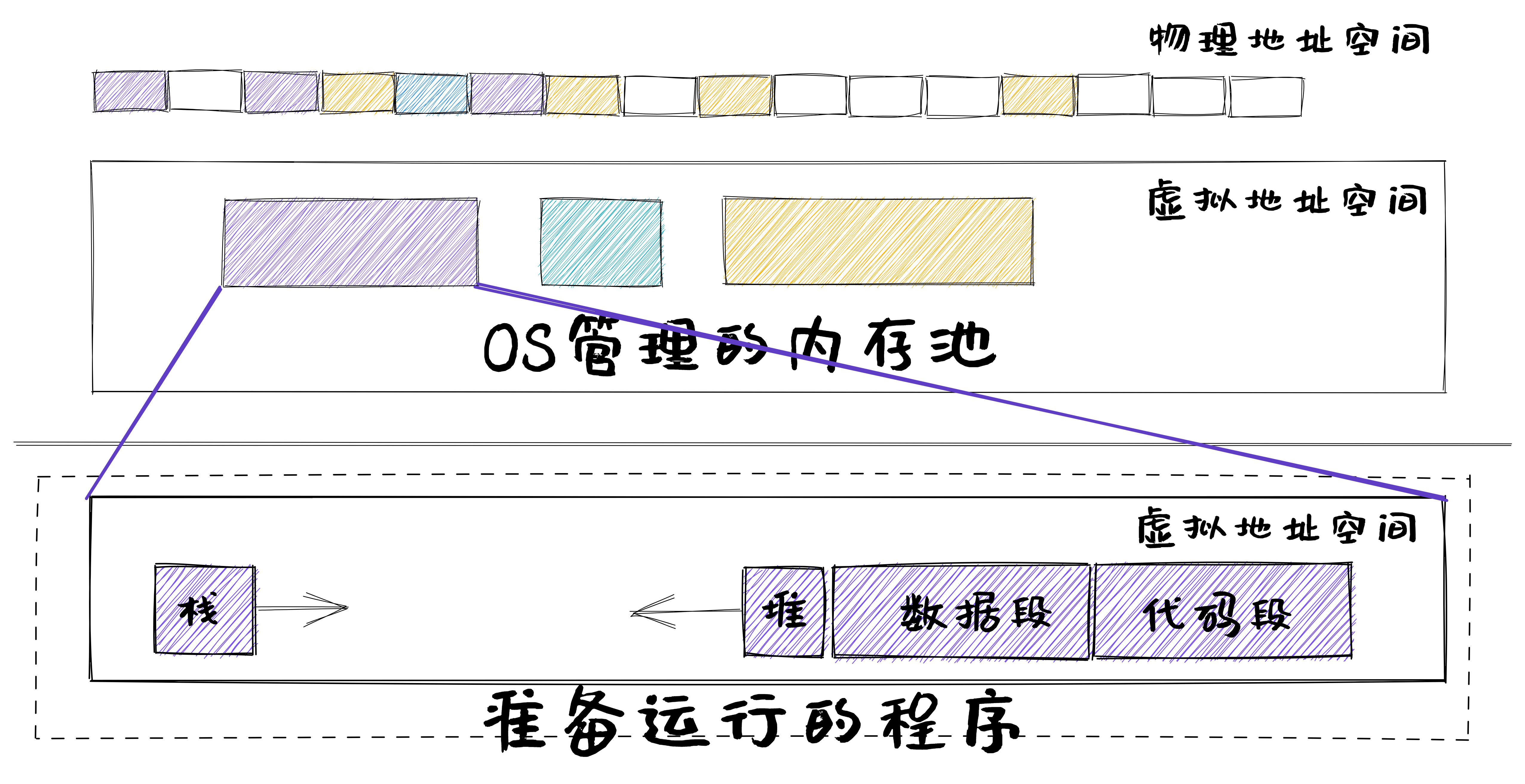Address space of an app
Program Loading
Step 1: OS loads the program to run

Malloc function call
Step 2: The program makes a malloc function call, and the Lib library has free blocks

The kernel allocates memory
Step 2: The program makes a malloc function call, and the Lib library has free blocks
